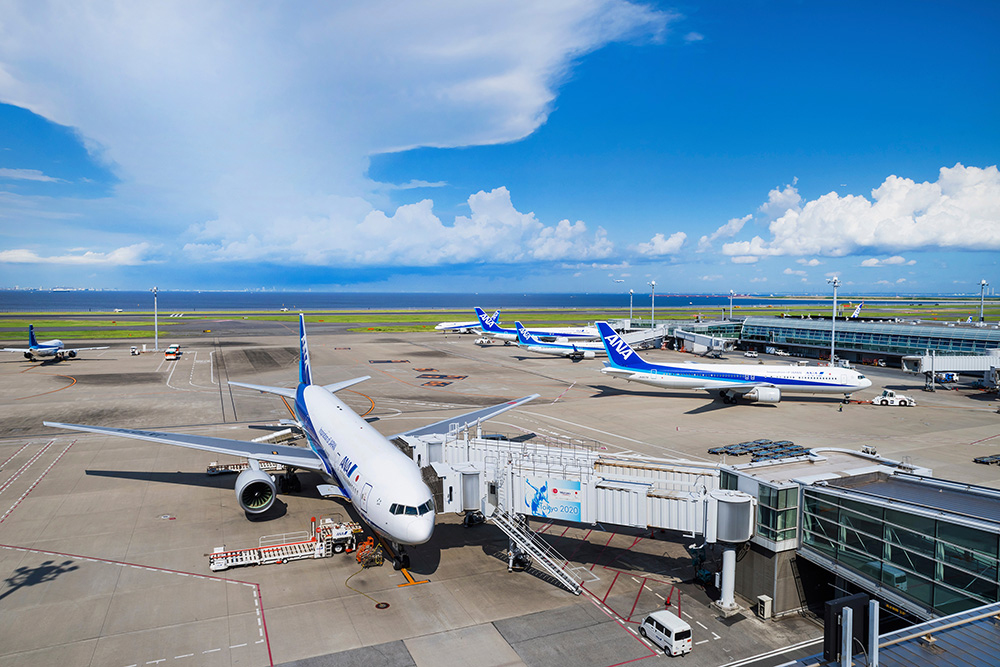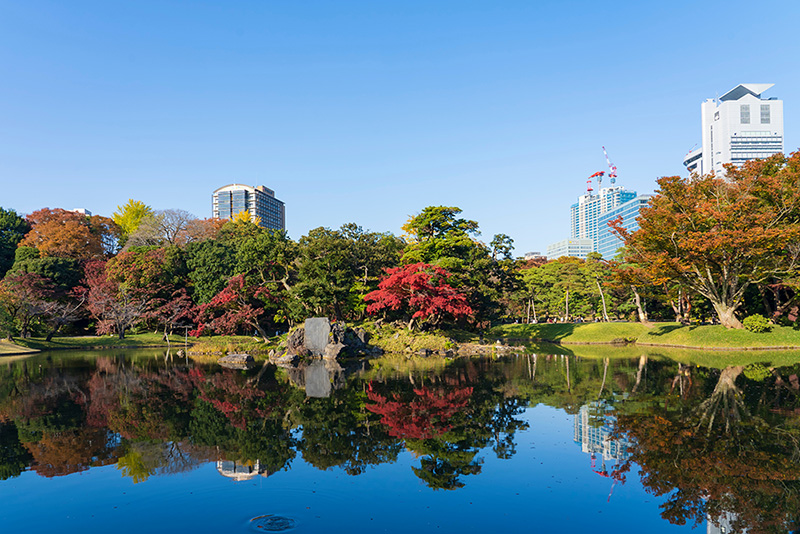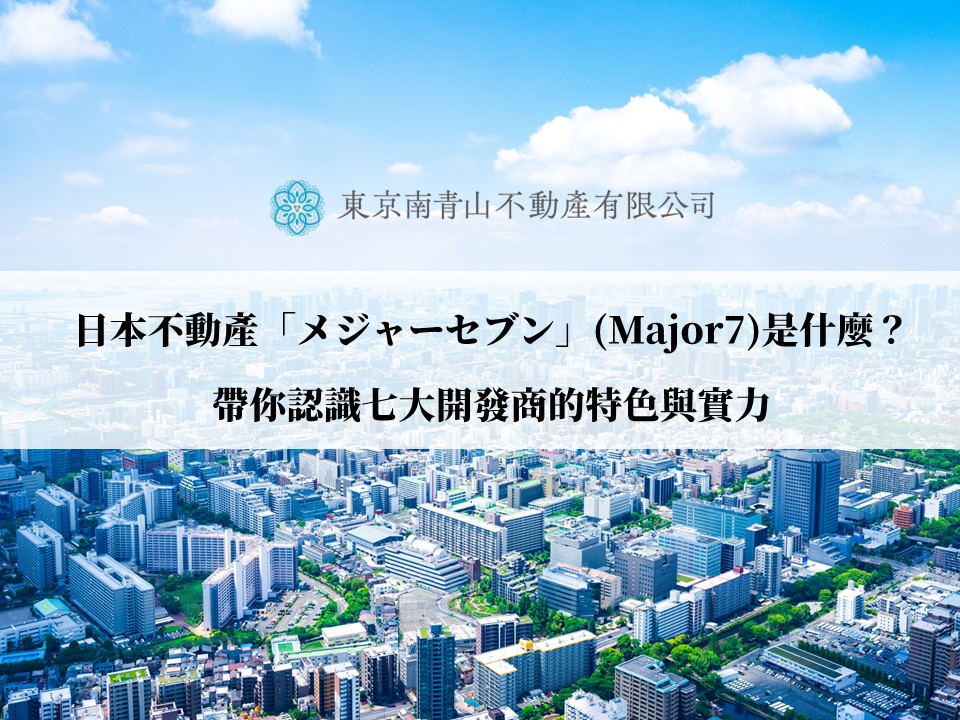Q4 (Apr-Jun 2022) real GDP growth rate (2nd preliminary reports): 0.9% YoY
Q4 real GDP (2nd preliminary reports):132 trillion 6375 billion yen / 1.6% YoY (Source: Cabinet Office)
This is the fourth issue of the MARE Monthly Real Estate Market Report, which was launched in July this year. Following the significant easing of entry restrictions on measures against the new Covid, it is expected that the number of visitors to Japan will increase dramatically in the coming period. This report is based on the latest information available as of 11 October 2022 and mainly reports on market trends as of August this year. We hope this will help you to understand the opportunities for buying and selling property.
【1.Insights on the Forthcoming Announcement of the Kishida Cabinet's Flagship Comprehensive Economic Policy, Which is Due to be Formulated This Month.】
The course of the Japanese economy is largely influenced by the various policies of the ruling party. For example, former Prime Minister Abe made smoothing the flow of money to the market to stimulate privatesector investment as a key policy, which resulted in improvements in economic indicators such as stock prices, economic growth, corporate performance and employment. As confirmed in last month's issue, a key policy for the Kishida Government is to expand 'investment in people' to achieve 'new capitalism'. To chart a course towards achieving this, we look at the contents of the 12th Meeting of the Council on Economic and Fiscal Policy, which was held on 5 October at the Prime Minister's Office to discuss the outline of a 'comprehensive economic policy' aimed for formulation by the end of this month.
One important factor supporting the property market trend is that the wage situation of the general population. Although property purchases and rentals by non-Japanese residents have risen in recent years, the main buyers and renters are still mainly residents of Japan. Without an increase in wages, it is therefore difficult to support an increase in rental set prices and sales prices, and a decrease in vacancy rates. As has been confirmed in previous editions of this report, the Government has made it one of its most important policies to take advantage of the weak yen to attract FDI to Japan, and to do so, it is essential to create an attractive investment environment. Considering these factors, the author pays close attention to trends in wage increases.
A point of concern is that, according to the Monthly Survey of Labour Statistics (preliminary figures) for August released by the Ministry of Health, Labour and Welfare on 7 August, total cash salaries (nominal wages) excluding the effect of prices increased by 1.7%, whereas real wages, including the effect of rising prices, fell for the fifth consecutive month, down 1.7% on the same month last year and not keeping pace with the growth in prices.
Considering this concern, at the above meeting, the Government considered a favourable circle to realise a structural wage increase. In the internal labour market, the Government stated that it would attempt to raise wages through the development of an environment that fosters and activates human resources, while in the external labour market, it would aim to stimulate smooth labour mobility accompanied by higher wages. In addition, the meeting considered continuing to increase the minimum wage, which continues to rise steadily, and positioning the promotion of GX (Green Transformation) as a means of increasing wages while reducing inflation caused by external factors through the use of affordable energy.
【2.Property Market Related Information: Basic Data on a Real Economy】
Next, the basic data on the real economy is examined. Table 1 below shows that new housing starts increased for the first time in four months, with 77,712 starts, or 4.6% YoY, the highest level of starts since October last year, and an increase after three months of decline. The breakdown was 22,291 owner-occupied units, down 11.2% YoY, marking the ninth consecutive month of decline. Houses for rent were 31,295, up 8.9% YoY and representing an increase for the 18th consecutive month. Houses for sale were also up 16.2% YoY to 23,172 units, showing another increase after last month's decline. This seems to reflect the resumption of all types of business that had been stalled, as the number of people infected with new Covid has peaked and started to decline, and opportunities for business negotiations have increased.
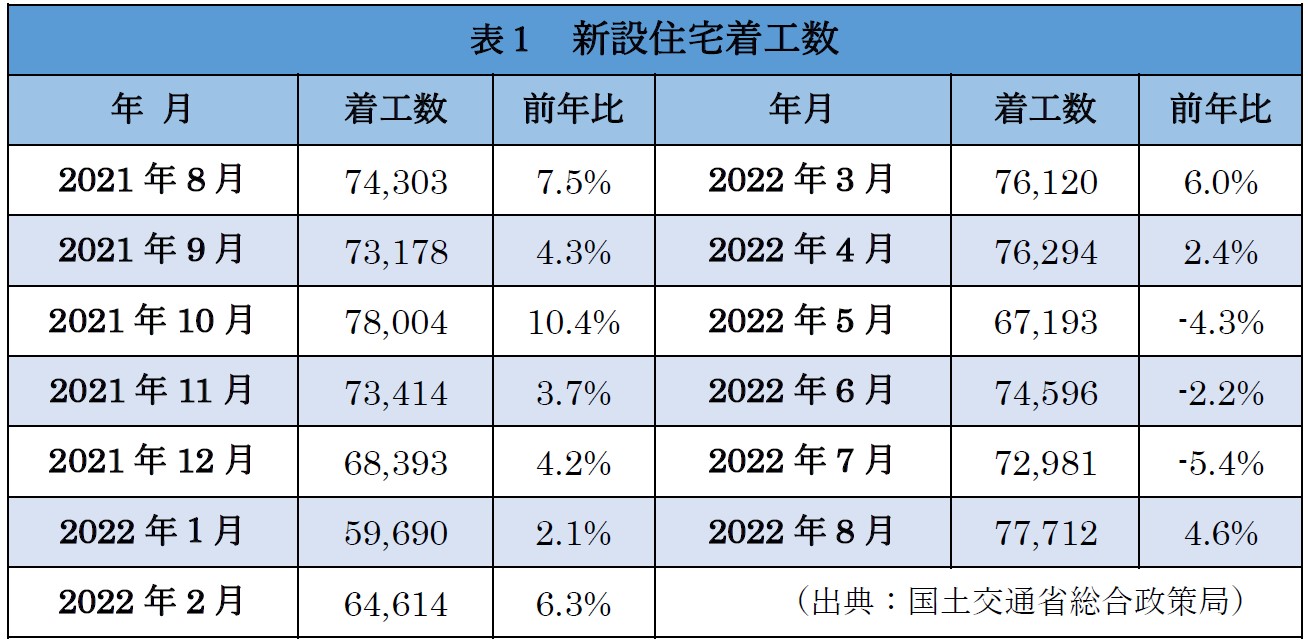
On the other hand, the new condominium market trends in Tokyo and the three prefectures showed a significant decrease of 40.1% in the number of new condominiums supplied, as can be seen in Table 2. In the Tokyo metropolitan area and Kanagawa Prefecture, the supply decreased by more than 70%, while in Saitama and Chiba Prefectures, the supply increased by 103.1% and 51.4% respectively. Both average price and price per square metre decreased by more than 18% in the metropolitan area as a whole, and, as in all months, Saitama was the only prefecture where the contract rate increased.
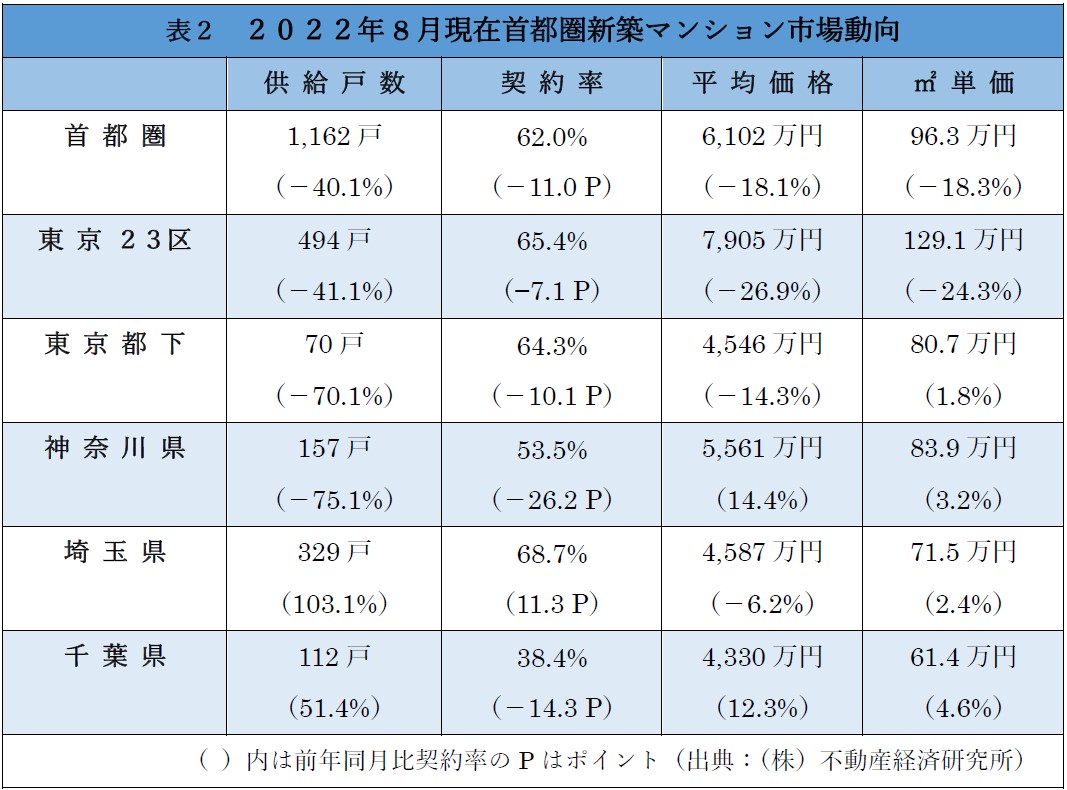
Figure 1 shows that, regarding the increase in population growth, all three prefectures rather than Tokyo show a slight decrease. The decrease in the number of people exceeds the increase in Tokyo, which is predicted to be due to the phenomenon of relocation outside the metropolitan area. The contract rate for properties with 20 or more storeys was 68.4%, still below the 70% level compared to July, when the rate was above 70%. This figure reflects the property market, where prices continue to rise. In addition, the significant decrease in supply can be attributed to a reaction to the large number of condominiums sold in the same month last year, and according to the Real Estate Economic Research Institute, "August usually sees a downward trend due to the closure of model rooms, but this year the trend was more pronounced", while "consumer willingness to buy remains high and condominium prices remain at high levels". On the other hand, they believe that "consumer willingness to buy remains high and condominium prices will remain at a high level".
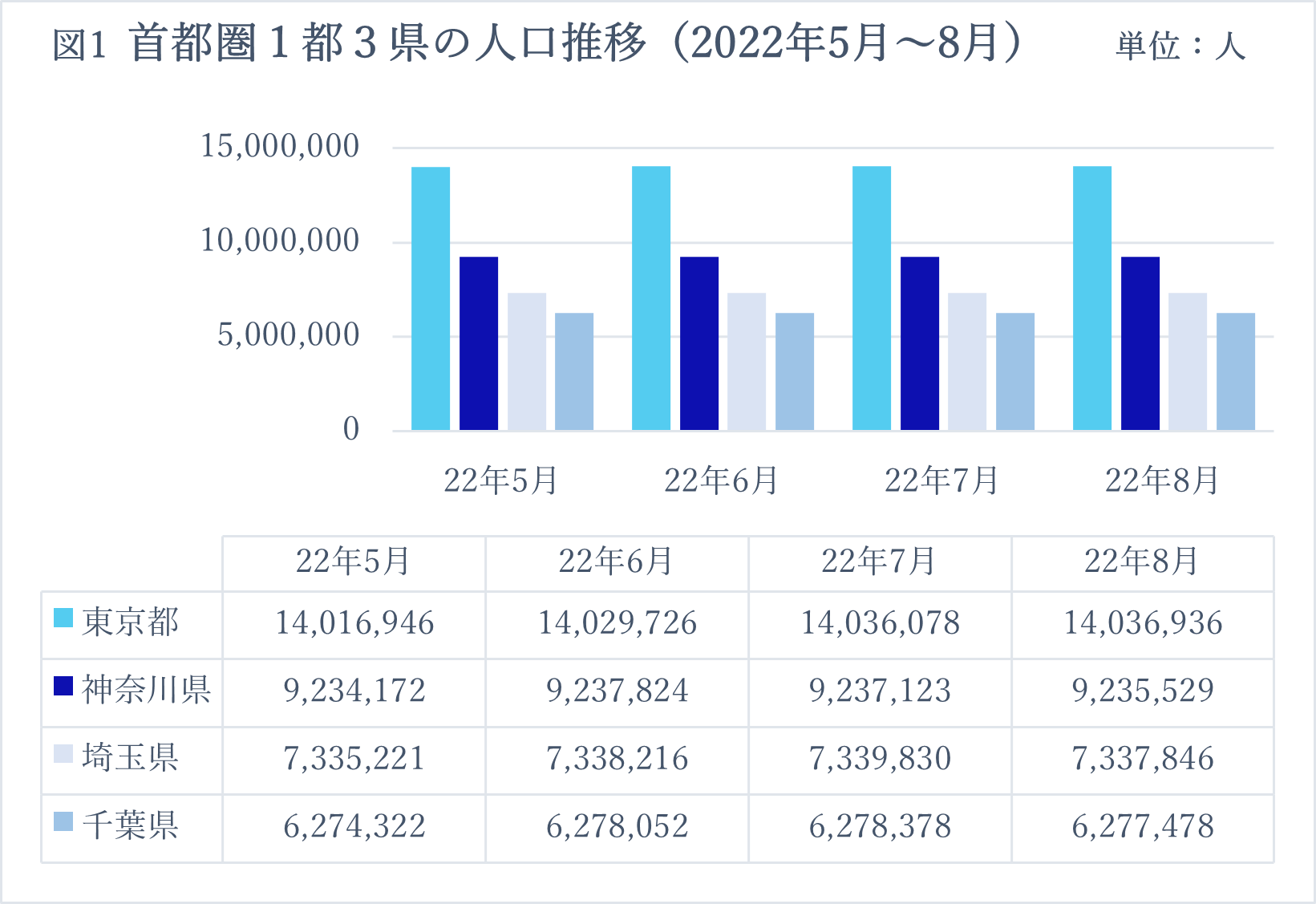
(Source: Compiled by the author based on demographic data from the Tokyo, Kanagawa, Saitama and Chiba city governments / as of 14 September 2021).
Although figures are not shown in this report due to space limitations, according to the "2022 Prefectural Land Price Survey Results" released on 20 September by the Ministry of Land, Infrastructure, Transport and Tourism, the national average land price for all uses rose 0.3% for the first time in three years (1.5% in the Tokyo metropolitan area), and the national residential land price rose 0.1% (1.2% in the Tokyo metropolitan area), the first increase in 31 years. The figures are measured as of 1 July 2022 and show that land prices are rising across the country. The figures to be released next month will be of interest in determining the actual state of the property market.
【3.Information on Property Market Trends: Economic Outlook】
On 6 October, MAJOR7, a real estate information portal site jointly operated by seven major Japanese real estate companies, announced its 'Survey on the Towns You Would Like to Live in', which was conducted between 3 and 17 August among the site's internet members living in the Tokyo metropolitan area (Tokyo and neighboring three prefectures) who are considering buying a new flat through the seven companies. Table 1 combines this with market price information based on information on properties listed on the website of Tokyu Land Corporation, one of the MAJOR7 companies.
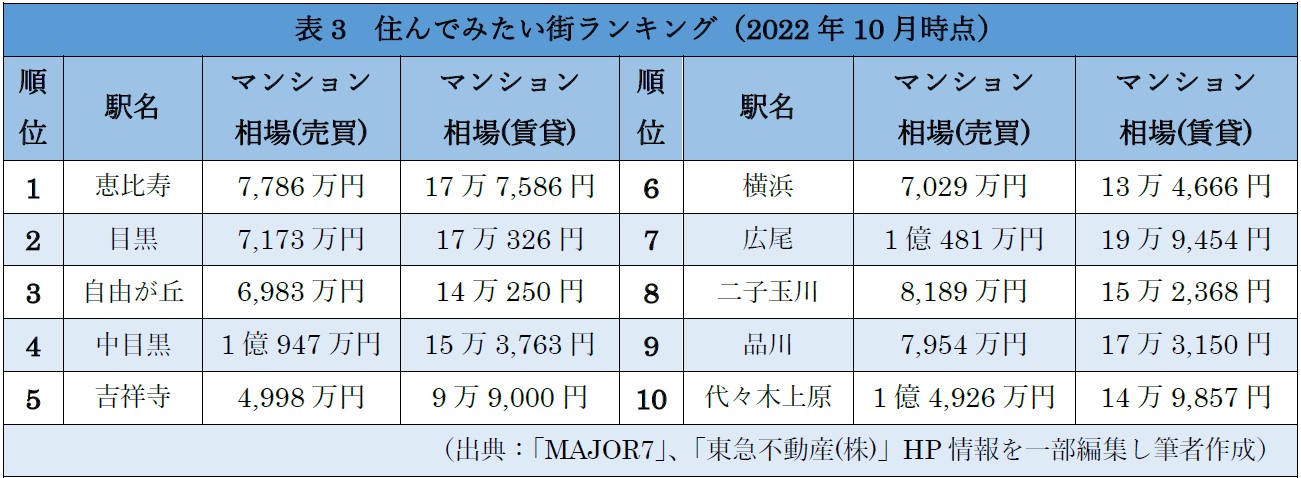
Although the figures are for reference only, as they depend on the volume of listings and the type of properties listed, they seem to be fairly close to the market prices that the author has long perceived. The following three points can be read from these figures: first, nine of the top ten stations in the Greater Tokyo area are located within Tokyo, with the exception of Yokohama in Kanagawa Prefecture; second, the highs and lows of the condominium sales market do not necessarily indicate the highs and lows of the condominium rental market; and third, with the exception of Yokohama and Kichijoji, eight stations are concentrated in the Jonan area of Tokyo (the six wards south of the Imperial Palace).
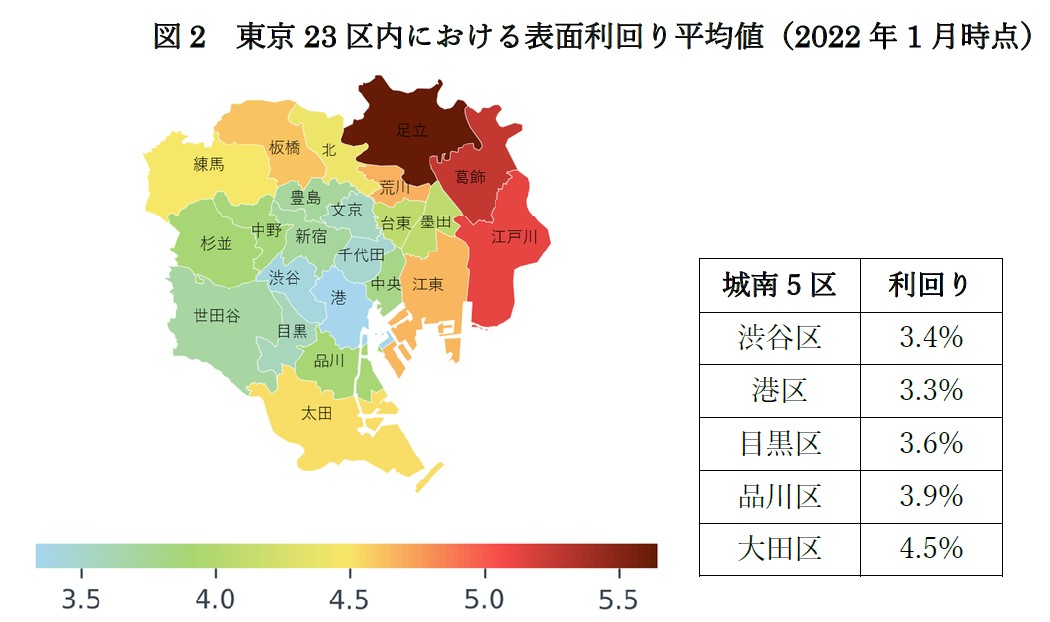
(Source: quoted from the website of Price Hubble Japan Inc.)
There seem to be three main reasons for the popularity of the Jonan area: firstly, it has excellent transport links, including the Toei Subway, private railways and the JR Yamanote Line; secondly, it is a fashionable shopping destination, with Shibuya, Jiyugaoka, Futakotamagawa, Roppongi, etc.; and thirdly, many areas are blessed with a green environment, such as street trees and parks, which is the main reason as seen from various surveys.
The results of a ranking conducted 10 years ago also showed that all but Shinagawa and Yoyogi Uehara were ranked in Table 4, indicating that the most popular towns are relatively fixed. In other words, these towns are the starting point and underpin the attractiveness of owning a property at that station or in the surrounding area. Of these, Ota Ward is particularly recommended for its development potential and high yields, even though land has not risen that much. Figure 2 shows the surface yields in the 23 wards of Tokyo as visualised by PriceHubble Japan Inc. Although not as high as the Adachi, Katsushika and Edogawa wards, it can be seen here that yields are particularly high in the Ota ward among the Jonan area.

(Source: Statistics Bureau, Ministry of Internal Affairs and Communications)
The monthly macro-data information will now be reviewed. Table 4, National Consumer Price Index, shows that the composite value increased by 0.3% over the last month, with the composite excluding fresh food also increasing by 0.3%, as did the composite excluding fresh food and energy. The overall value has exceeded 2% for five months in a row, mainly reflecting the impact of higher resources and a weaker yen. The increase is expected to continue in the future as the impact of these two factors is passed on to prices.
According to Figure 3, Cabinet Office Business Conditions Index, the leading index increased by 2.0 points ('P') compared to the previous month, the first increase in four months; the three-month backward moving average (the high and low values obtained by comparing the figures for the month under study with the average for May, June and July and the average for June, July and August) increased by 0.06P, the seven-month backward moving average (high/low values calculated by comparing the figures for the surveyed month with the averages for January, February, March, April, May, June and July and the averages for February, March, April, May, June, July and August) fell by 0.04P, the third consecutive monthly fall.
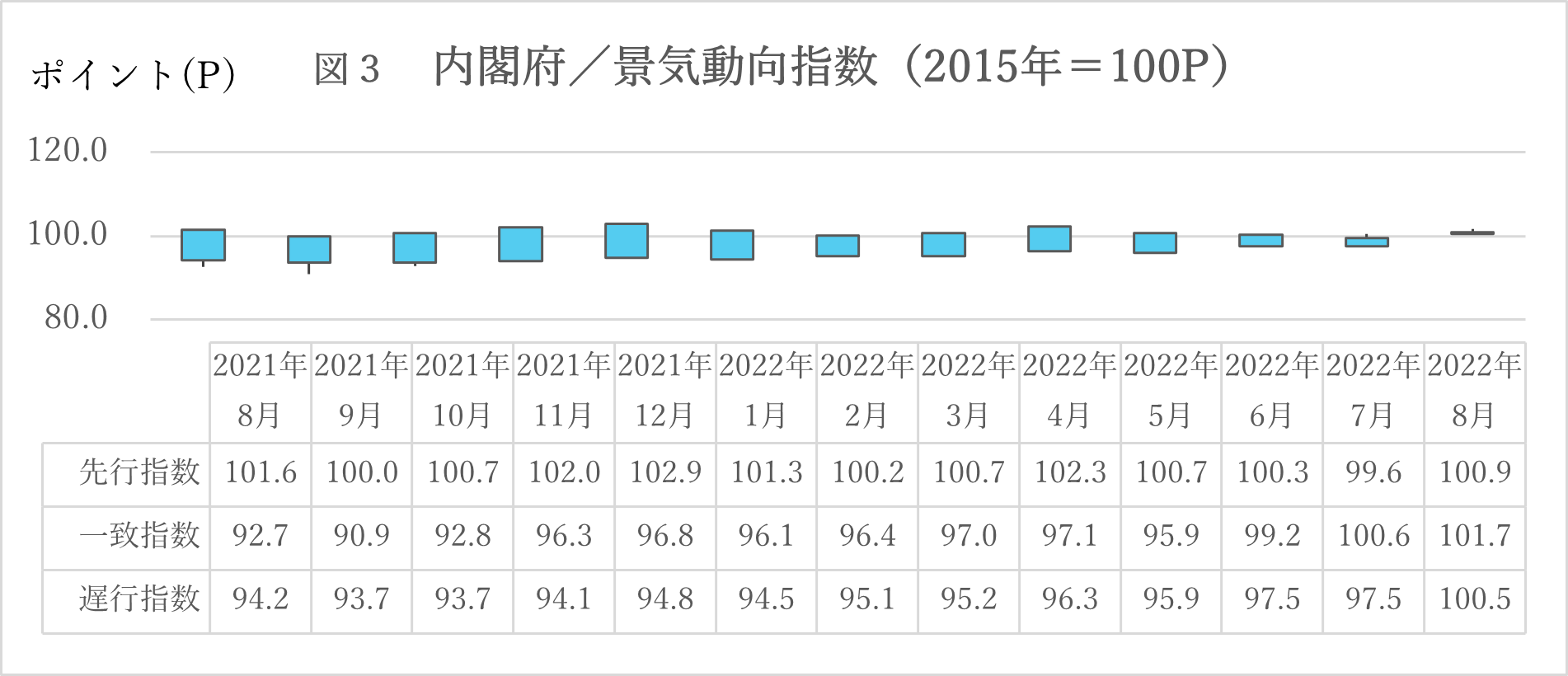
The coincident index rose 1.6P MoM, up for the third month in a row; the three-month backward moving average rose 1.93P, up for the third month in a row; the seven-month backward moving average rose 0.77P, up for the tenth month in a row.
The lagging index rose 3.1P month-on-month, the first rise in two months; the three-month backward moving average rose 1.57P, a ninth consecutive monthly rise; the seven-month backward moving average rose 0.87P, a seventh consecutive monthly rise.
Figure 4 shows the number of visitors to Japan up to August this year. As confirmed in the previous month's editions, this was due to the continuation of the Government's policy easing measures at the time of entry. The number of visitors to Japan, which has increased by more than 15% compared to the previous
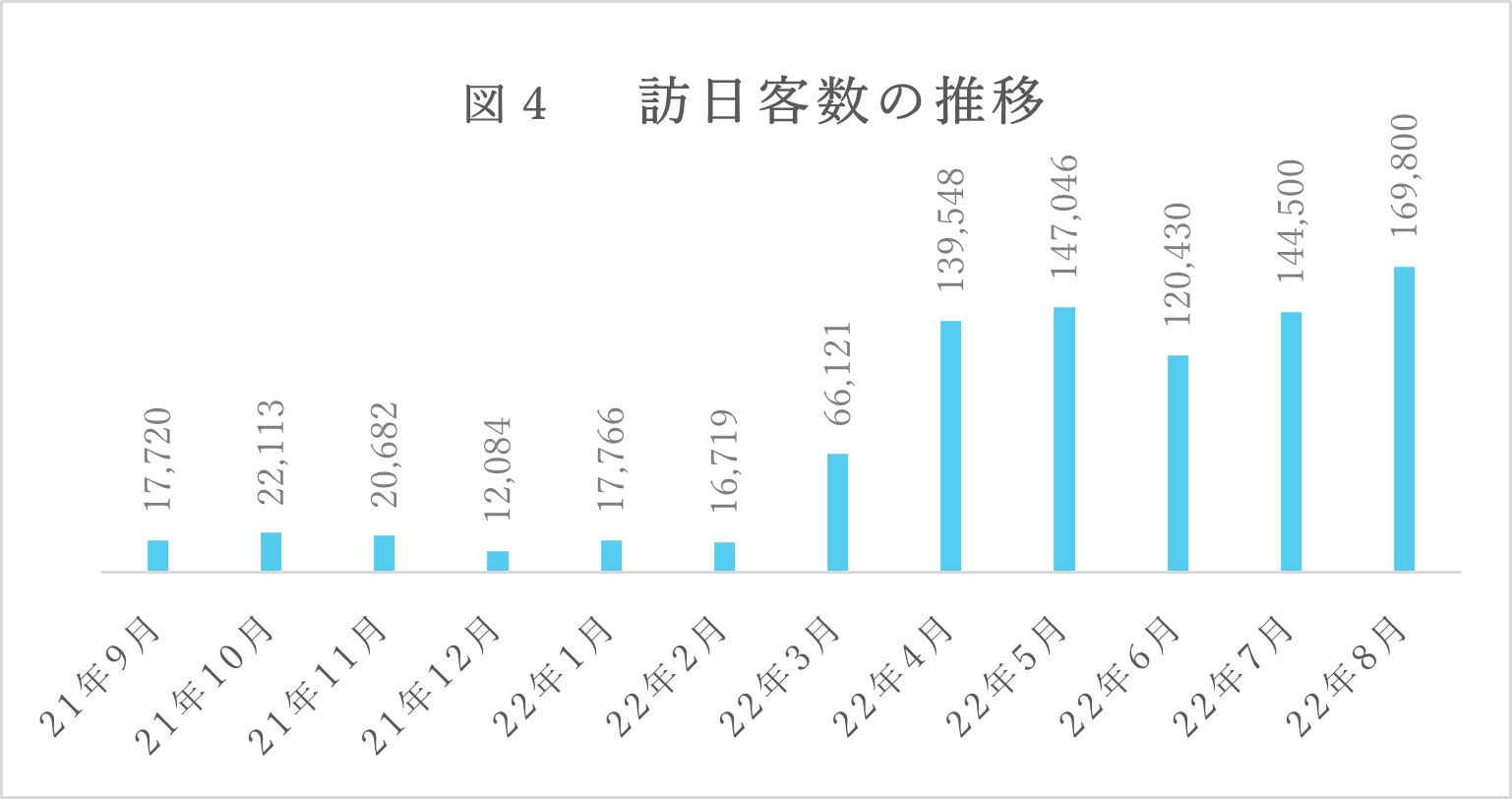
(Source: Japan National Tourist Organisation)
month, is expected to accelerate further, as the following five new measures, announced by the Cabinet Secretary on 26 September, will commence from 11 October this year. First, the measures that do not require all new arrivals to be managed by a person responsible for receiving them, and the measures imposed on tourists, which were limited to package tours, are to be lifted. Second, to resume the application of visa exemption measures. Third, to require all returnees and entrants, except those infected with the new Covid, to submit either a certificate of the third vaccination from the World Health Organisation (WHO) Emergency Use List or a negative test certificate from a test taken within 72 hours prior to departure from abroad. All returnees and entrants shall not be tested on entry. Fourth, there should be no upper limit on the total number of persons entering Japan, which was set at 50,000 per day. Fifth, airports and seaports in Japan that do not currently receive international flights should gradually resume receiving international flights as soon as they are ready to do so. As confirmed above, the momentum for visiting Japan is ripe.
【4.Prospects for Future Property Purchases】
The yen's depreciation, which has advanced by about 29% YoY to 145.73 yen as of 11 October this year (112.5 yen the same day last year), is also reflected in the 'TDB Economic Trends Survey' information released on 5 October, stating that figures that push up property purchases show 'strong sales of real estate'. The 12th meeting of the Council on Economic and Fiscal Policy, mentioned at the beginning of this report, pointed out that domestic investment in Japan remains low compared to other countries, and strong government support will be implemented without missing the 'golden opportunity of the yen's depreciation'. Such efforts to improve the investment environment will create a structure in which industries with high added value are continuously created and wages rise boldly. Assuming that such a virtuous cycle of economic growth created by the government continues, then now is an opportune time to own good quality real estate.


